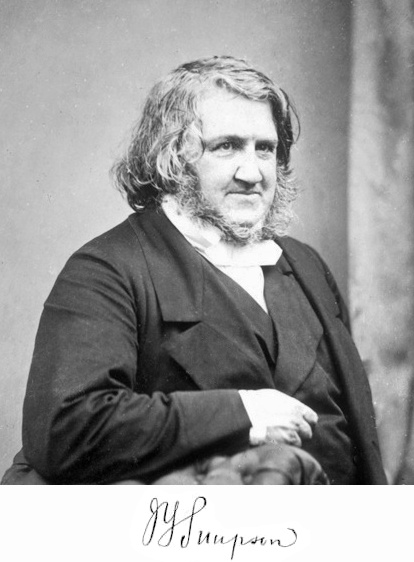
On our Secrets of the Royal Mile tour we sometimes stop in a close called Carruber’s Close. At first glance it doesn’t seem to be much of a tourist attraction, but if we look beyond its dull grey walls – and ignore the questionable fumes – this unassuming alleyway leading off the High Street reminds us of one of the greatest discoveries on the way to modern medicine.
In the mid-1800s, there was a medical dispensary in Carruber’s Close, run by a certain James Young Simpson. His name appears in different places around Edinburgh, he even has his own statue in Princes Street Gardens. How did he deserve all these honours? The answer is mind-numbing (believe me, Sir James himself would have appreciated the terrible pun): he pioneered chloroform anaesthesia.
James Young Simpson was a professor of midwifery at the University of Edinburgh. Always a bit of a free thinker, he liked to experiment with different substances to see if they had anaesthetic properties. Legend has it that one evening in 1847 he invited a few of his colleagues over to his house to try out an ominous concoction called chloroform. Other scientists had already shown that the substance could put animals to sleep but until then nobody had thought of using it on humans. The adventurous doctors inhaled it and the first thing they noticed was that they felt oddly cheerful all of a sudden. However, they didn’t get to enjoy it for long because one by one they lost consciousness. Imagine what poor Mrs Simpson must have thought when she walked in and found them all on the floor!
By sheer luck all of them actually woke up after their dangerous experiment, and James Young Simpson started to perfect is new-found anaesthesia, first on several family members (Oh, wouldn’t you have loved to have an 19th century doctor as an uncle?) and later on his patients at Edinburgh’s Royal Infirmary.
He faced strong opposition – but not from anyone who was actually concerned. The mothers who had delivered their babies under the pain-relieving effect of chloroform couldn’t stop singing his praise. It was the clergy who thought it necessary to remind him that women were supposed to endure the pain of childbirth to suffer for Eve’s sin.
Despite the resistance James Young Simpson continued to administer chloroform until he eventually gained a powerful ally. He was Queen Victoria’s official physician in Scotland, and in 1853 she gave birth to her eighth child using chloroform. With her royal approval anaesthesia during childbirth became widely accepted, even fashionable.
Chloroform came to be used in surgery as well, and it was nothing short of a revolution. For centuries patients had dreaded the painful and life-threatening ordeal so much that most of them preferred to die of their symptoms rather than letting a surgeon come near them. To be known as a good surgeon, you didn’t necessarily have to be accurate, all you had to be was quick. It was considered a badge of honour if you could amputate a leg in less than three minutes. With the introduction of chloroform surgery changed drastically. Surgeons could finally focus on precision, and patients didn’t need to fear the pain anymore, they could simply go to sleep and, given that everything else went well, wake up healed.
Even though chloroform was eventually replaced by less toxic substances, it’s safe to say that all of us owe a lot to Sir James Young Simpson, the quirky Edinburgh doctor with his unquenchable thirst for innovation.



